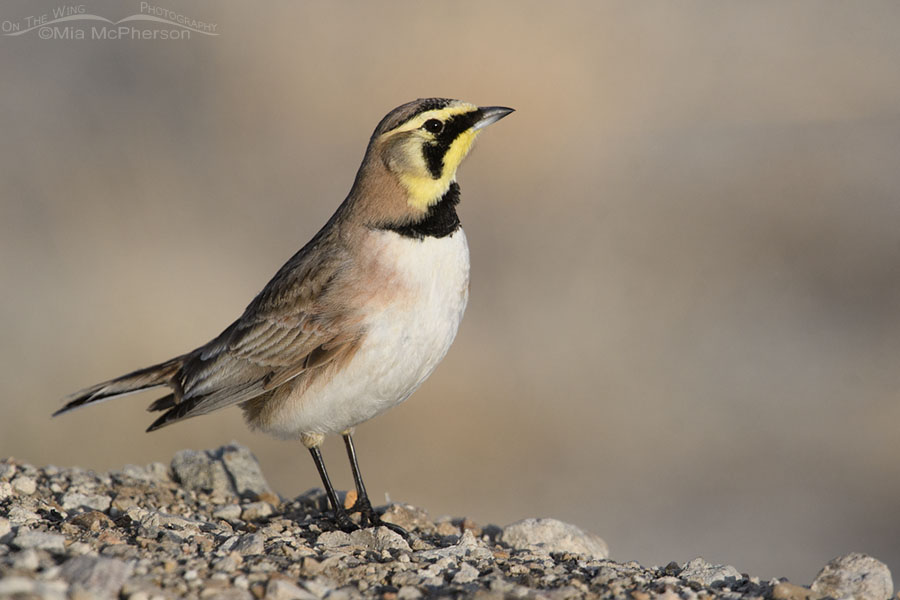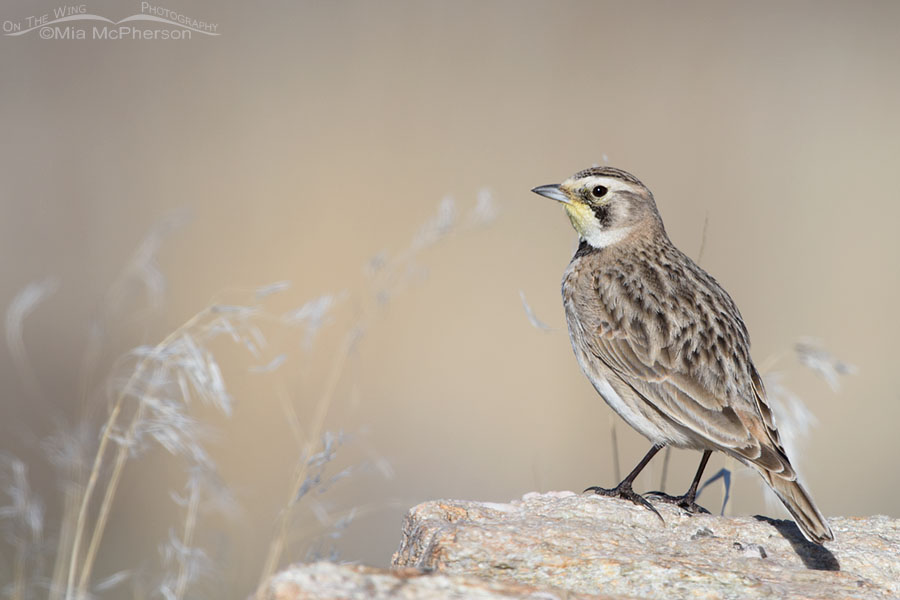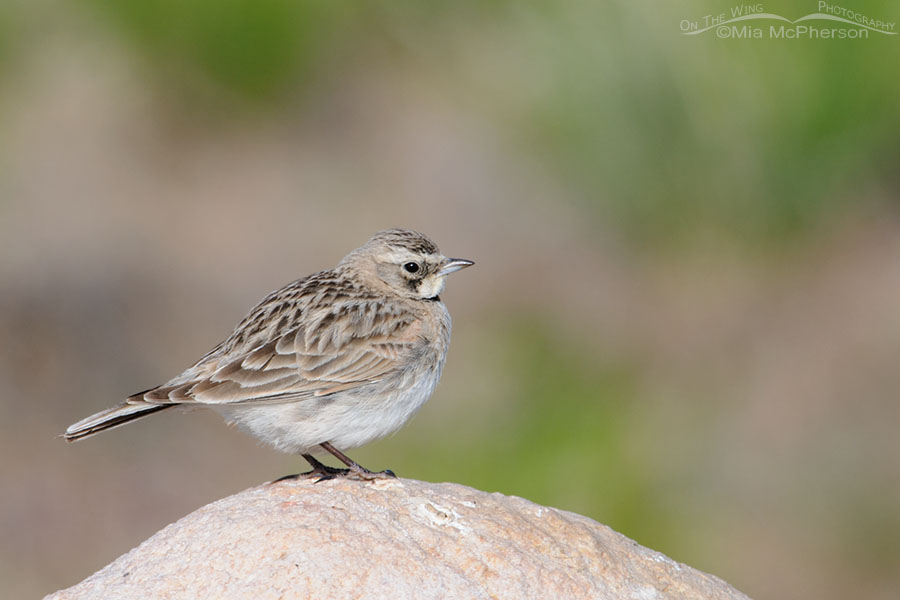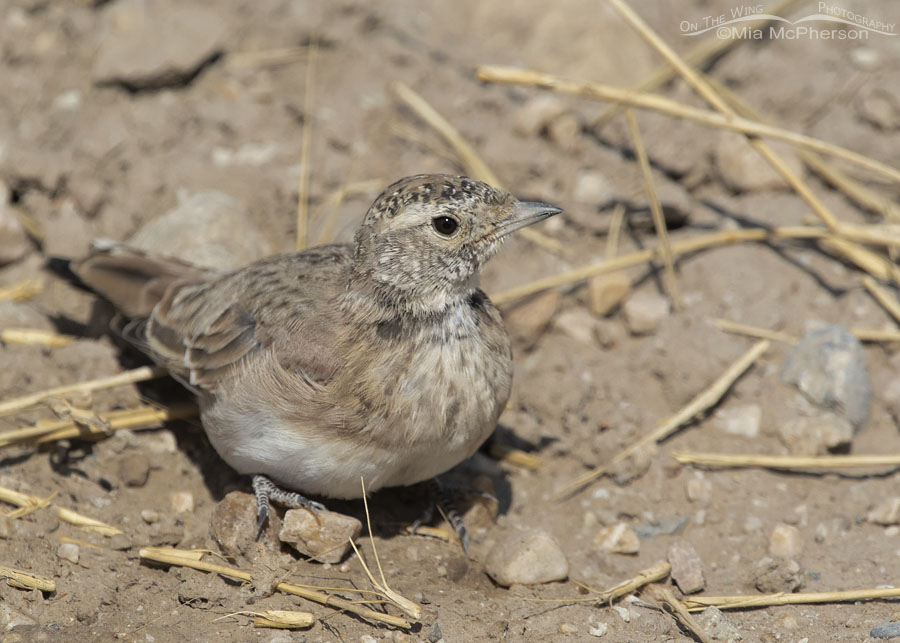 Adult male Horned Lark on a gravel pile – Nikon D500, f7.1, 1/2000, ISO 640, Nikkor 500mm VR with 1.4x TC, natural light
Adult male Horned Lark on a gravel pile – Nikon D500, f7.1, 1/2000, ISO 640, Nikkor 500mm VR with 1.4x TC, natural light
After photographing this male Horned Lark on Antelope Island three days ago I decided to share a photo of him plus female and immature larks in a single post.
Adult male Horned Larks are more colorful than females and their “horns” are more prominent. Typically they have more yellow plumage on their faces and necks than the females of this species have. The “horns”, which are occipital feather tufts, are usually erect in males. The male in my photo above had his “horns” flattened when I photographed him perched on a gravel pile next to the road.
Male Horned Larks have already begun to sing on their territories. It may seem early for them to be in courting mode but this species breeds early.
 Adult female Horned Lark on Antelope Island – Nikon D810, f6.3, 1/2000, ISO 320, Nikkor 500mm VR with 1.4x TC, natural light
Adult female Horned Lark on Antelope Island – Nikon D810, f6.3, 1/2000, ISO 320, Nikkor 500mm VR with 1.4x TC, natural light
This adult female Horned Lark was also photographed on Antelope Island but in February of 2015. I see far fewer female Horned Lark than I do males throughout the year. I suspect that has to do with their more cryptic coloration and plumage patterns than how many of them there actually are. They blend into their habitat quite easily.
Horned Larks are very early breeders. I have seen them nesting in the West Desert of Utah as early as March. With our warmer than “normal” winter this year I wouldn’t be surprised to see the nesting sometime this month.
Adult Horned Larks molt only one time a year which is usually in August. This species does not have a breeding or Basic Alternate Plumage phase and any changes in the coloration of their plumage is caused by feather wear.
 Immature Horned Lark on Antelope Island – Nikon D300, f8, 1/400, ISO 400, Nikkor 200-400mm VR with 1.4x TC at 400mm, natural light
Immature Horned Lark on Antelope Island – Nikon D300, f8, 1/400, ISO 400, Nikkor 200-400mm VR with 1.4x TC at 400mm, natural light
After Horned Lark chicks first hatch their plumage is mottled. I have tried several times to get clear views of Horned Lark chicks in that plumage phase and have yet to succeed. I have been able to photograph them when they are a few week old when they have lost most of that mottled plumage. I photographed this immature Horned Lark on Antelope Island in May of 2014. It looks similar to the female above but is missing the yellow feathers on the throat area.
 Juvenile Horned Lark from a late brood – Nikon D500, f9, 1/2000, ISO 500, Nikkor 500mm VR with 1.4x TC, natural light
Juvenile Horned Lark from a late brood – Nikon D500, f9, 1/2000, ISO 500, Nikkor 500mm VR with 1.4x TC, natural light
The juvenile Horned Lark in this last photo surprised me. I wouldn’t have expected to find such a young Horned Lark in September. There is still a bit of the mottled feathers on this juvenile Horned Lark’s head, cheek and throat. I don’t recall ever seeing a juvenile Horned Lark so late in the breeding season prior to this one that I found in the West Desert last year.
I enjoyed hearing the male Horned Larks on Antelope Island singing again. Their songs are another sign that spring is on the way.
Life is good.
Mia
Click here to see more of my Horned Lark photos plus facts and information about this species.


Aren’t they all just lovely. Thanks, Mia.
Thanks for introducing me to another bird that lives nearby. Wonderful images all.
Great photo series! I always appreciate seeing juvi’s, adult males and females, and when they exist, the birds showing their breeding plumage.
All are beautiful despite the male being the ‘showiest’. Thank you for this series.